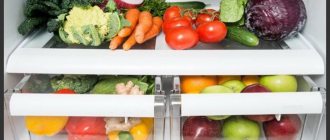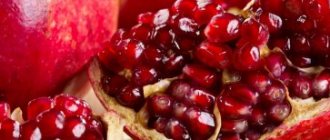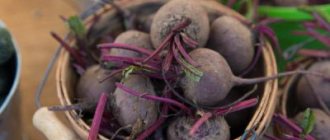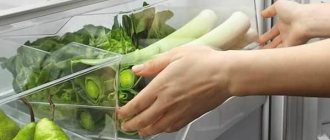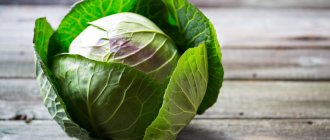Carrots contain an abundance of useful substances; in winter they are one of the main sources of vitamins, so this valuable root vegetable should be consumed all year round.
The question arises - how to preserve carrots so that they remain fresh for a long time and do not lose their original nutritional properties.
Let’s take a closer look at how to properly and how to continue storing carrots in the refrigerator (fresh, boiled, without freezing, etc.) so that they don’t become limp or flabby.
Preparation for storage
Prepare containers for storing carrots labeled “for food”.
The following are used as containers:
- thermal packages;
- vacuum bags;
- food stretch film;
- baking molds;
- plastic containers, buckets.
The storage container must be hermetically sealed to prevent air from entering the product.
Set the temperature regime of the refrigeration chambers:
- Main compartment – 2-6 degrees Celsius.
- Freshness zones – 0-3 degrees Celsius.
- Freezer compartment – 8-25 degrees below zero.
Vegetables retain their natural freshness longer without access to oxygen.
To create an exceptional vacuum, a special pump is used to pump air out of the package. You cannot freeze food in ordinary plastic bags and glass containers - the glass may crack and the bag may burst.
What to do during the growing process
- The process of growing carrots begins with preparing the seeds. To increase the percentage of germination, it is recommended to calibrate carrot seeds in order to weed out dry seeds that are unsuitable for sowing.
- Soil preparation. Preparing the soil for sowing carrots begins in the fall; it must be deeply loosened and fertilized. Carrots respond well to potassium fertilizers, but it is not recommended to fertilize the soil with manure, because of it the root crops are born incorrectly and have a clumsy shape.
- Care of seedlings. When your carrots sprout, your task is to ensure comfortable growth for them, this consists of the correct watering regime, soil care and weed control.
- Harvesting. Timely and correct harvesting is the key to long-term storage of carrots.
How to properly keep fresh so that it doesn’t become limp or flabby?
Select healthy root crops, of medium size, without signs of rot . Be sure to cut off the top part by 1-1.5 cm. If the root vegetables are very large, cut them in half or into 4 parts.
Washed
It’s more convenient to use washed carrots; it’s nice to take them out of the refrigerator, but this method has pros and cons:
- plus - when washed, defects on the skin and signs of spoilage are immediately visible;
- minus - the shelf life of washed vegetables is shorter than unwashed ones; they easily rot from unwanted proximity.
If carrots need to be kept fresh for 7-10 days, they are immersed in a container with water and placed in the lower compartment of the main chamber of the refrigerator. The container is tightly closed, the water is changed every other day.
For storage for 30-70 days:
- Use a soft brush to wash vegetables with cold water.
- Dry on a towel.
- Keep for a day in the refrigerator.
- Place them in bags and squeeze out the air.
- A napkin is placed in each bag to absorb condensation.
- The package is hermetically sealed.
Store in the vegetable compartment (fresh zone). Root vegetables are stored well when wrapped in damp newspaper or a wet towel. The packaging is periodically moistened and changed as necessary.
Unwashed
The vegetables are carefully cleaned of lumps of earth, trying not to damage the skin, the sand is brushed off with a soft brush, and laid out under a canopy to dry for a day.
Storage methods:
- Packed in plastic bags of 4-5 pieces, hermetically sealed;
- wrap 1-2 carrots in cling film;
- one or several pieces are wrapped in damp newspaper or paper;
- placed in plastic containers.
For better preservation, sawdust is added to the bags. Properly packaged unwashed carrots remain fresh for up to 6 months. If carrots are not dried well before wintering, they will quickly deteriorate.
Features of the structure of the vegetable
An important point is in what form carrots should be stored. Is this root vegetable fresh? If fresh, will it be frozen? Perhaps the carrots have already been processed into a finished product: boiled, turned into a snack or juice. All this will affect the conditions and shelf life. For long-term storage of fresh carrots, they should be carefully sorted, and root crops with traces of disease , damage, or simply uneven should be separated. Size also matters.
Attention : Carrots that are kept in the refrigerator for a long time should be approximately equal in size, not too big and not too small.
Methods for harvesting crops for the winter
Root vegetable preparations are made in several ways:
- cut - for first and second courses;
- tinder - for subsequent sautéing or salad;
- blanching - a semi-finished product that requires additional preparation;
- sauté with and without onions;
- boiled - stored whole root vegetables or chopped.
The entry of microorganisms into the semi-finished product will quickly cause fermentation of the product, therefore, when chopping, keep your hands and kitchen tools sterile.
Frozen
Frozen carrots are not only an excellent addition to many dishes, but also a source of microelements, vitamins and other useful substances that the body lacks in winter.
The advantages of frozen root vegetables are their availability all year round , regardless of price, and time savings when preparing dinner.
All types of carrots, of any size and condition, are suitable for freezing.
Vegetables are washed, skins are scraped, the green tops are removed, dried naturally and cut into:
- Small cubes - for soups.
- Large cubes - for stews, roasts.
- In strips, cubes, circles - for first courses, goulash.
- Stars, slices, flowers - for decorations, soups.
The cuttings are sorted into ziplock bags, not stuffed tightly.
Distribute evenly throughout the bag, squeeze out the air, and seal. Thawed carrots cannot be re-frozen; this makes them watery and tasteless, so they are packaged in single portions. You can quickly make carrot puree from frozen boiled carrots or cut them into a vinaigrette.
Whole root vegetables are also frozen if they are small in size . Before doing this, be sure to wash and dry them.
Boiled
Boiled carrots are left in their peels, peeled or cut into semi-finished products for dishes, and stored on the top shelf of the refrigerator.
The container cannot be hermetically sealed; there must be access to air ; ideally, it is better to cover it with a damp towel or napkin. The container is hermetically sealed so that the smell from it is not absorbed by other products.
The first sign of spoiled boiled carrots is the appearance of mucus on the peel.
Blanched
Treatment with boiling water or steam kills microbes on the surface of vegetables and helps preserve the taste and color of carrots.
To do this, you will need 2 containers - one with boiling water and one with ice water:
- washed, peeled carrots are immersed in boiling water for 3 minutes;
- Remove vegetables using a colander;
- quickly transfer to a container with cold water for 2-3 minutes.
The cooled root vegetables are removed from the ice water. The tray is covered with a towel, vegetables are laid out in one layer on it, and placed in the freezer for 2.5-3 hours.
Then they take it out, put it in a prepared container and place it in the freezer or on the top shelf of the refrigerator.
Grated
Washed, peeled, dried vegetables are grated on a grater or in a food processor:
- Divide into portions.
- Place into containers.
- Freeze.
- After 1-2 hours, take it out of the freezer, shake it and put it back.
There is another way:
- a path of grated carrots is laid out on the stretch film;
- wrap the track tightly in film, like a sausage;
- they are fixed on the sides with thick threads;
- 2 hours after placing it in the freezer, knead the bag with your hands so that the workpiece does not freeze into a lump.
This method is convenient because you can cut off the required amount from the “carrot sausage” and return the rest to its place.
If grated vegetables are stored on the top shelf of the refrigerator, cover the container with a damp cloth.
In Korean
Korean-style snacks cannot be kept open because they have a specific smell that will fill the entire refrigerator compartment.
The preparation for the Korean salad is stored in the freezer, defrosted on the bottom shelf of the refrigerator, so it is taken out several hours before preparation.
Suitable for storage:
- glass,
- ceramic,
- porcelain dishes with an airtight lid.
With beets
The storage conditions for beets and carrots are the same, only the top and tail of the beets are not cut off.
Vegetables are washed, dried on a towel, placed in a plastic container or vacuum bag, and stored in the vegetable compartment. Periodically inspect and remove damaged ones. Chop the vegetables together:
- For beetroot soup and borscht, grate on a regular grater.
- For vegetable salad - use a Korean carrot grater.
- For stews and side dishes, cut into cubes and cubes.
Prepared vegetables are placed in portions into containers and stored in the freezer.
Shredded boiled carrots and beets are stored in a regular refrigerator for no more than 24 hours. Water the beets generously with vegetable oil, otherwise it will color the carrots.
It will be convenient if you pack the root vegetables in plastic wrap, wrapping 1 carrot and 1 beet together. Sometimes this amount is enough to avoid opening the entire package.
Composition and beneficial properties
Carrots contain substances that provide benefits to the body:
- beta-carotene – is converted into vitamin A in the body, has a beneficial effect on visual function, strengthens the retina, supports the immune system, exhibits antioxidant properties, and slows down aging;
- B vitamins – normalize metabolic processes, participate in the production of hemoglobin, improve the condition of hair, skin, nails, mucous membranes;
- vitamin C – strengthens the immune system, suppresses inflammatory processes;
- vitamin E – provides antioxidant effect;
- vitamin K – normalizes blood clotting;
- potassium – improves the functioning of the cardiovascular system;
- chlorine – maintains water-salt balance;
- phosphorus – strengthens bone tissue;
- fluoride – has a beneficial effect on thyroid function;
- selenium – strengthens the immune system, provides a rejuvenating effect;
- fiber – normalizes the functioning of the digestive system, removes waste and toxins, regulates blood sugar levels.
Eating 100-200 g of carrots daily will provide the body's daily need for retinol (vitamin A). In order for the substance to be absorbed, you need to add a small amount of fat to the grated or chopped vegetable: vegetable oil, sour cream or cream.
How long do they store?
If you follow the freezing technology, the shelf life of vegetables in the freezer is:
- raw – 10-12 months;
- blanched – 16-18 months;
- boiled – 25-30 days.
After this period, it loses its taste and nutritional value.
Shelf life of vegetables in the main compartment of the refrigerator without freezing:
- Unpeeled, washed – up to 2 months;
- Unwashed – 5-6 months;
- Peeled – 5-7 days;
- Chopped – 2-3 days;
- Grated – 1-2 days;
- Boiled – 1 day;
- Freshly squeezed carrot juice is stored on the top shelf of the refrigerator for no more than 30 minutes.
Carrots are best stored at a temperature of 1-3 degrees Celsius and a humidity of 85-95%.
Where to keep supplies
Carrot supplies should be kept in a cool, dark place. You should not store the harvest in the same room as ripe apples: fruits emit a special gas - ethylene, under the influence of which orange root vegetables can quickly deteriorate.
In a private house
You can store carrots in the house in the winter in the basement or cellar. Before sending the crop for storage, the room must be prepared in two stages.
- Cleaning. Sweep and remove debris, including remnants from last year's harvest.
- Disinfection. Disinfect walls, floors, hanging shelves using a smoke bomb or slaked lime.
In the apartment
In most apartments, the ability to maintain a large crop is limited, but you can find four places to store carrots.
- On the balcony. Before the first frost, the best place to store vegetables is the balcony. Carrots should be placed in drawers or cabinets to protect them from sun and dust. As soon as the thermometer drops to 0°C, supplies need to be brought into the house. If the balcony is insulated, carrots can be left throughout the winter.
- Next to the balcony door. This place is suitable for storing root vegetables if the door is not insulated, otherwise there is no point in keeping carrots here.
- In the pantry/closet under the window/dark “nook”. When choosing a place to store vegetables, you need to give preference to locations located away from heating devices: usually it is somewhat cooler here and the humidity is higher.
- In a refrigerator. In summer, it is better to store carrots in the refrigerator, especially if the house does not have a basement or cellar.
Adviсe
Little tricks you need to know:
There should be separate cutting boards for cutting cooked and raw carrots.- A sticker is placed on each package indicating the date of storage; this will help in the future to determine the expiration date of the product.
- It is necessary to maintain the temperature regime of the refrigeration chambers, otherwise the carrots will wrinkle or sprout.
The preparations are periodically inspected, vegetables with signs of spoilage are removed.
What can cause carrots to go bad?
If you stacked the root vegetables correctly, but they still spoil, what should you do? First you need to find out the cause and eliminate it:
- Before storage, the root vegetables were poorly sorted and stored with mold. To do this, check your inventory periodically.
- The temperature has changed sharply, the winter is too warm or cold. The temperature must be maintained, the cellar covered or, conversely, opened.
- The humidity is too strong, sometimes during the construction of a house the placement of the cellar is poorly thought out, ventilation is not provided and it turns out to be dull, then the storage of vegetables and root crops will be short-lived.
- Fruits damaged by carrot flies are no longer worth trying to save. It is better to freeze it or use it for canning.
We looked at how to properly store carrots at home, in the refrigerator, on the balcony or in the cellar. But in addition to preparing the fruits and observing the conditions, you also need to choose the right variety.
Early species are poorly stored, for this we use mid-season or late ones.
